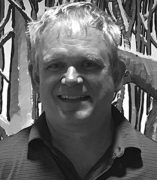
Allan Fluharty, NBCT
Prosser Career Academy High School
About
I have taught science and math for 13 years at Prosser high school, located in the Bellmont-Cragin neighborhood of Chicago. During the 2018-19 school year, I will be teaching classes in physics and chemistry to freshman and sophomores. Prior to becoming an educator, I worked for over 20 years in the chemical manufacturing industry as an engineer and a manager. For 26 years, I was a member of the Navy Reserves as an engineering duty officer.
I was excited and honored to be appointed a BEST fellow. I find that working with UIC scientists and engineers adds context, depth, and effectiveness to my instruction. For several summers, I was a Research Experience for Teachers (RET) fellow at UIC’s Institute of Environmental Science and Policy, under Dr. Thomas L. Theis. My projects included exploring the impact of nanotechnology, learning about environmental impact through life cycle analysis, and developing high school curriculum in biofuel manufacturing.
This summer, I am working with Dr. Ian Papautsky in his microfluidics lab. The technology of microfluidics, or the manipulation of fluids in channels with dimensions of a few millimeters or less, will be a “game-changing” technology that improves areas such as the diagnosis of disease and chemical synthesis. Under the guidance of Dr. Papautsky and his students, I have learned how to design and fabricate microfluidic devices using computer aided design and to manufacture my designs using a 3D printer. I learned how to visualize and model the flow of fluids in these devices with computational fluid dynamics, colorimetry and fluorescent microscopy.
My students need to know about microfluidics because it is a rapidly expanding industry that requires people with imagination and ingenuity.
There are many aspects of my BEST fellowship that I plan to incorporate into a new curriculum for my students. For example, students struggle with the abstract notion of molecules and how molecular structure is determined by physical constraints. I plan to introduce concepts of molecular geometry by having students create and print molecules with a 3D printer. The learning process will become progressively more complex: 2D drawings → 3D ball and stick models→ computer-generated 3D images → hand-held models printed by the 3D printer. Other areas included in my curriculum include creating designs using CAD, 3D scanning, and computational chemistry.
My BEST experience was transformational, and I have a greater appreciation how advancements in technology can be used to model the characteristics and performance of new objects. I have discovered that advancements in technology have made these design tools more intuitive to the point that they are accessible to the average high school student. I feel that when they use these tools to make their own designs, my students will become more interested in pursuing a STEM career.